Pursuing a vibrant and active workplace for all employees

Aiming for the dynamic engagement of all citizens, the government has begun promoting "work style reform" to realize a diverse array of working styles and create new vitality in society. The Kobe Steel Group is undertaking initiatives for reforming the work style of its staff. Here we share with you our original work reform schemes, which are designed from the perspective of our employees, in particular, the purpose of our activities and "KOBELCO Way" work practices to reform daily work styles.
In order to secure and retain highly-qualified human resources, the Kobe Steel Group has been improving the work environment for its employees by taking such measures as encouraging the use of paid leave and promoting a healthy balance between work and life. In fiscal 2016, we made a full-fledged start of the Initiatives for Reforming the Work Style of Our Staff (hereinafter called "Work Style Reform Initiatives"), with the aim of creating time through more efficient work practices and improving the use of time by each individual employee.
The Work Style Reform Initiatives consist of three core elements: reforming work styles, reforming employment rules, and reforming work practices. The biggest purpose of these initiatives is to provide employees with more fulfilling work lives and personal lives. From a management perspective, the Work Style Reform Initiatives offer significant potential benefits, including increased productivity, reduced overtime costs, and the securing of excellent human resources. However, such benefits can only be gained by creating more employee-friendly work environments. For the Kobe Steel Group, people are our greatest asset. Making work lives and personal lives more fulfilling for each and every employee will lead to better work performance, which in turn will generate value in terms of management.
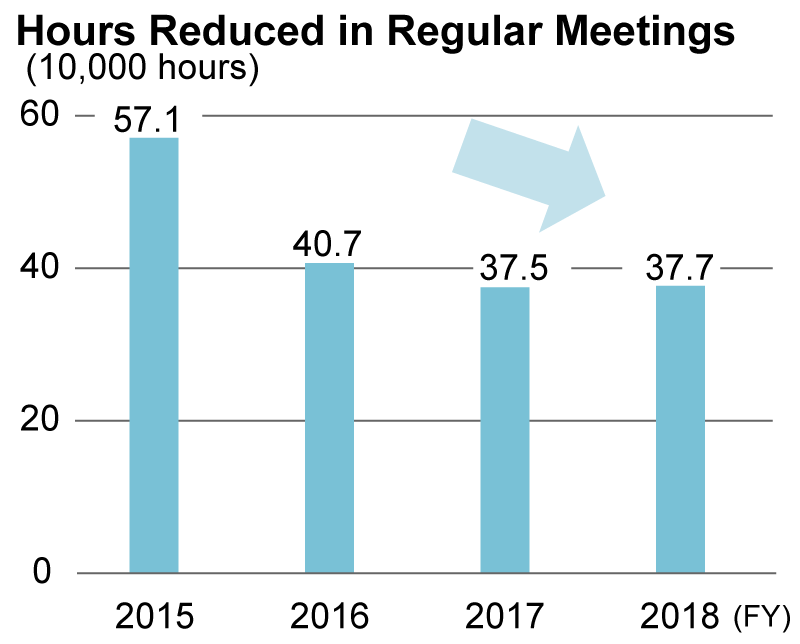
When we reviewed the work practices that we had previously taken for granted, it became apparent how much time was being needlessly wasted. As part of our initiatives for work style reform, we took thorough stock of misused time in accordance with the KOBELCO Way rules in areas such as our regular office meetings—where time was often expended without reaching any definite conclusions—and e-mail reading and writing , which accounts for 20% to 30% of working hours. As a result, we succeeded in reducing the total time used for regular meetings by 164,000 hours, from 571,000 hours in fiscal 2015 to 407,000 hours in fiscal 2016. We continued these efforts in 2017 and beyond and achieved a further reduction of 30,000 hours.
Japan achieved economic power through mass production and mass consumption during a period of high growth and a bubble economy, supported by long hours of overtime. Nowadays, however, the focus is on planning, ideas, and solution capabilities. Some spare time should be given to each person for creating wisdom that will be a source of new value.
We believe that our Work Style Reform Initiatives will be a driving force of inspiring the motivation of diverse employees, which will allow the Kobe Steel Group’s evolution from a manufacturing-oriented to a value-creation-oriented organization. In that light, a certain degree of latitude is required. Rather than adhering to overly entrenched rules, it would be expected to improve the work environment so that we can flexibly respond to changing work conditions for success.
Overview of Work Style Reform Initiatives
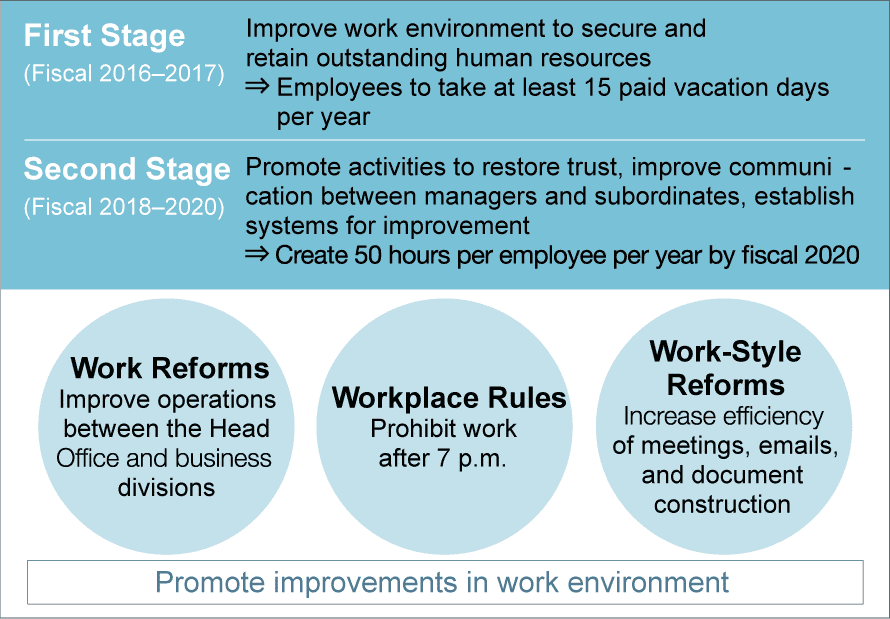
As part of our Work Style Reform Initiatives, the Kobe Steel Group is promoting the KOBELCO Way for office meetings and e-mail correspondence to reduce unnecessary work and generate more time, as well as reforms to work rules, such as finishing work by 7:00 p.m. in principle and other measures.
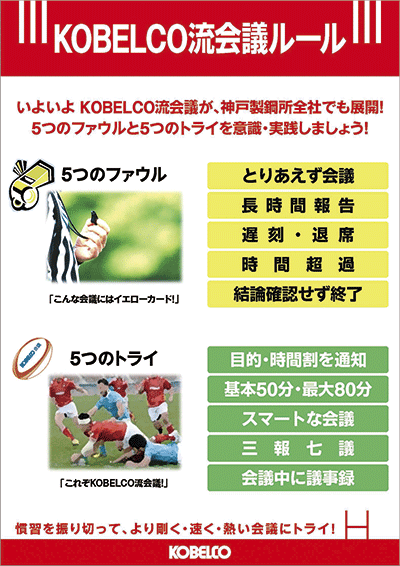
We eliminated meetings for meetings' sake and set the standard meeting duration to 50 minutes, with a maximum of 80 minutes.
Previously, many long meetings were held just for the sake of having them without any clear purpose, timetables, or goals. As part of our Work Style Reform Initiatives, we identified "Five Don'ts" that were considered as bottlenecks in previous meetings, and "Five Dos" that aim to make meetings more productive. As a result of efforts for improvement such as making the standard duration of meetings 50 minutes, or 80 minutes at most, and taking minutes during meetings, we successfully made a drastic reduction in the amount of time spent in meetings.
New rules and techniques for email: Convey main points quickly and accurately.
E-mail is an essential tool for modern business. However, the amount of effort required to read, write, and search e-mails is no small matter, with 20 to 30 percent of working hours being taken up by e-mail-related duties. As part of our Work Style Reform Initiatives, we analyzed previous e-mail practices and drew up10 rules to ensure faster, more accurate, and more effective use of e-mail. We are now encouraging adoption of these KOBELCO Way e-mail practices throughout the company.
Policy of working overtime no later than 7:00 p.m. in place since fiscal 2016
For employees who need to continue working after the regular quitting time, we have been implementing new work rules that specify finishing work by 7:00 p.m., in principle, since fiscal 2016. When employees need to work after 7:00 p.m. for an unavoidable reason, they must first obtain permission by submitting an overtime application to their managers in advance.
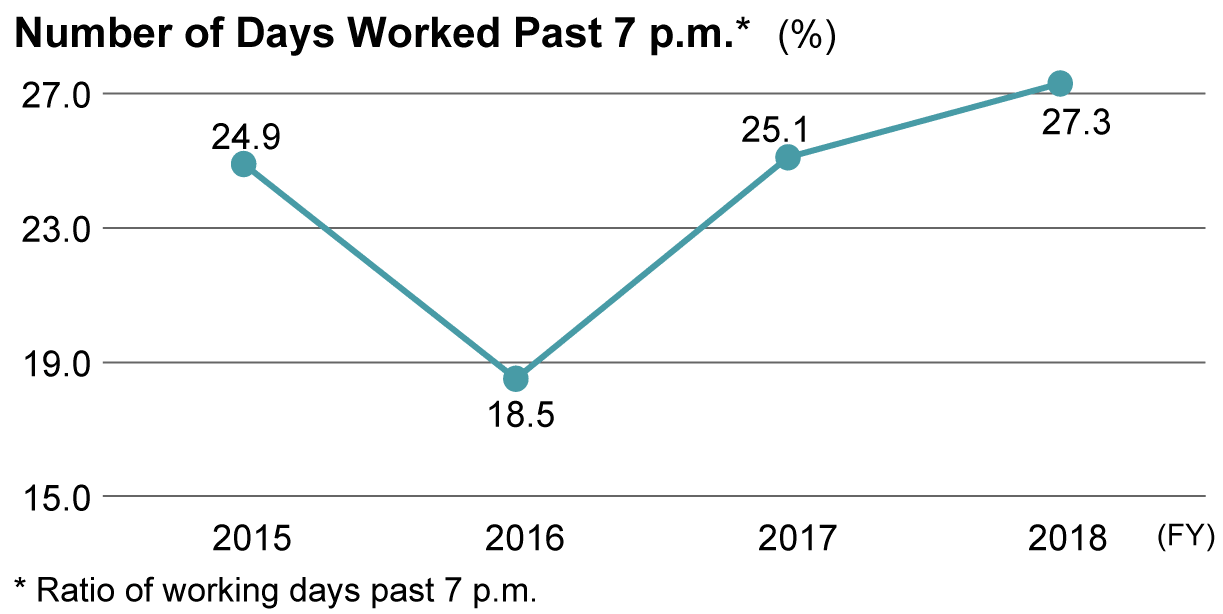
Our staff (managers, career-track employees, and technical and administrative employees) achieved the numerical target for increasing the use of annual paid leave to an average of 15 days or more a year, which we originally aimed for as part of our Work Style Reform Initiatives, by the end of fiscal 2017 as scheduled. Technical employees reached this milestone in fiscal 2018, one year ahead of the plan.
We continuously strive to improve the usage rate of annual paid leave for our 2nd Stage activities as well.
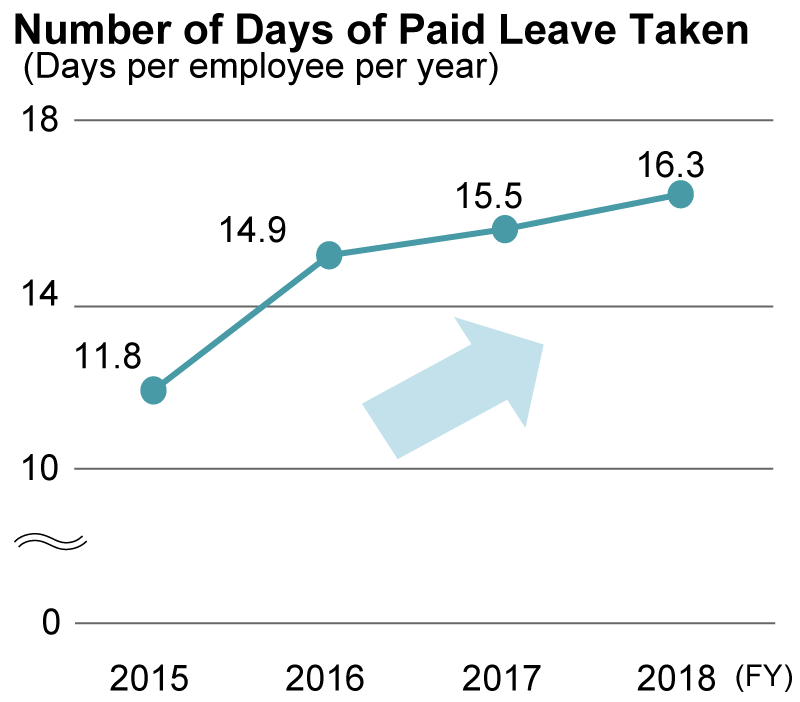
As part of our Work Style Reform Initiatives, we expanded the work-from-home day system starting April 2019 to promote a more independent and autonomous work style for employees and further improve productivity.
Main Changes
